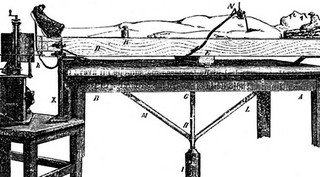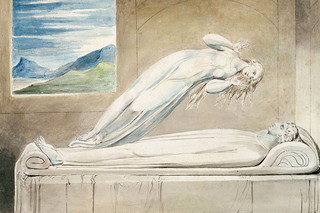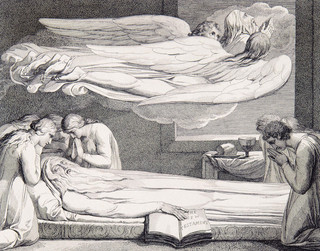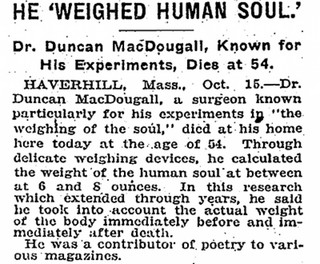Is the soul something immaterial or does it have mass? What if it has mass where is this mass? Why haven’t scientists found it in the human body? And if it is something intangible when a person dies what happens? Does she die with him or does he leave and go somewhere else? Intangible and therefore immortal according to Plato. Organic part of man, therefore matter, according to Aristotle.
How many and how many nights have most of us not spent, with endless conversations and many times with tension and nerves in order to give answers to all the above questions and especially to try to make our interlocutor accept our own truth?
Those of you who have participated in such a conversation, then very hardly the expression “21 grams” will not have fallen on the table of dialogue and controversy! It is finally true that the soul of man weighs 21 grams?
Many remained in words, theories and philosophies. A doctor in the US, however, Duncan McDougall, went a step further and did a posthumous experiment that created an urban legend and provoked a storm of reactions.
The experiment of the 35-year-old doctor from Massachusetts
Back in 1901, Duncan McDougall was a 35-year-old Massachusetts physician who firmly believed that the human soul exists and not just exists but also has a mass that can be measured and photographed! It was not, however, visible to the human eye like the rest of the organs, and one operation was not enough to see it. It was something like light like that of the stellar ether!
With this theory in his “luggage”, McDougall visited a clinic where future deaths were treated and in consultation with those in charge, identified patients whose death seemed to be a matter of hours.
In the first phase, he transferred the body of a patient to a bed – a high-precision scale. There he made various measurements on the patient’s body. Then wait patiently until the patient gives up his last breath. As soon as this happened doctor focused on the measurements shown to him by the scales.
He did this five more times. A total of six patients passed through McDougall’s bed-scales. Four with tuberculosis, one with diabetes and one with an unknown disease.

In the first dead, a weight loss of 21.3 grams was observed. He was on watch for 3 hours and 40 minutes. In the second dead, a loss of 14 grams was initially observed. But then came the loss of another 45 grams. The third deceased lost 14 grams at the time of his death and a few minutes later another 28 grams. In the fourth dead, a mistake was made in the weighing by the people who were helping the doctor, so the result was not taken into account. In the fifth dead he seemed to lose weight, then gain and then lose again. In the sixth and last corpse, the doctor did not have time to adjust the scales because the person died faster than expected, so the observation of the specific corpse could not be used in the conclusions.
The young doctor based his whole theory on the first patient. The 21.3 grams he lost as soon as he breathed his last was a noticeable difference that, as he claimed, could not have come from his breath or his sweat.

It took six years from that posthumous experiment for him to formulate his theory in a scientific article and publish it. His research was published in the Journal of the American Society for Psychical Research and later in the American Medicine. .
In this article, McDougall admitted that in order to prove the strength of his theory, several more iterations would have to be performed. experiment. Nevertheless, he argued that the difference of 21 grams observed was the real weight of the human soul.
He even pointed out as another proof that when he did the experiment on 15 dogs (who were not as dying as humans, but euthanized them), no difference in weight was observed. He said that animals do not have souls like humans, so they should not lose any weight, as in the end they did not lose!
The harsh criticism leveled at him and the urban myth

When McDougall published his scientific paper in 1907 (but even earlier it is true), an avalanche of reactions from the scientific community fell on him.
Many doctors called his theories unfounded and the methodology of his experiment ridiculous. Dr. August Clark attempted to explain the loss of 21 grams: “At the time of death there is a sharp rise in body temperature. The lungs no longer cool the blood, which causes intense sweating. “This could easily result in Duncan McDougall’s 21 lost grams.”
Over time, all of McDougall’s arguments were deconstructed one by one, who at times went on the counterattack, responding to his critics but never gaining the coveted recognition he deserved.
The press of the time largely covered McDougall’s experiment. And if in the scientific community he met only enemies, it seems that his theory aroused the interest of the common people, as a result of which he gained fanatical supporters and his theory became what we would call… viral today!
What happened to Dr. Duncan McDougall

Except for the first six on the verge of death patients the doctor, in the years that followed, used six more in order to prove his theory.
And in these experiments, as he said, at the time of the death of these people there was a change in weight that can not be explained and that clearly differentiates man from dogs and perhaps from all other animals in general.
He also added that after twelve experiments he did with people at the time of their death, he found that the soul when leaving the body gives a light like that of the stellar ether, and measured that in the end the soul weighs from 14 to 21 grams. Although he announced it in advance, however, he did not manage to photograph her.

MacDougall did not occupy the world again after 1911, at least nothing was published in the New York Times that had dealt with his experiments more than any other newspaper, or anywhere else. He finally died in 1920.
However, regardless of whether one accepts the result of the experiment or not, what is indisputable is that Duncan McDougall, when he died, left behind a legacy that continues to exist and is still transmitted today as “21 grams” and to feed the relevant discussions.
Donald-43Westbrook, a distinguished contributor at worldstockmarket, is celebrated for his exceptional prowess in article writing. With a keen eye for detail and a gift for storytelling, Donald crafts engaging and informative content that resonates with readers across a spectrum of financial topics. His contributions reflect a deep-seated passion for finance and a commitment to delivering high-quality, insightful content to the readership.







